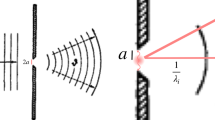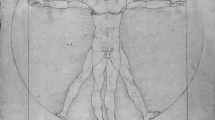Abstract
J. H. Lambert proved important results of what we now think of as non-Euclidean geometries, and gave examples of surfaces satisfying their theorems. I use his philosophical views to explain why he did not think the certainty of Euclidean geometry was threatened by the development of what we regard as alternatives to it. Lambert holds that theories other than Euclid’s fall prey to skeptical doubt. So despite their satisfiability, for him these theories are not equal to Euclid’s in justification. Contrary to recent interpretations, then, Lambert does not conceive of mathematical justification as semantic. According to Lambert, Euclid overcomes doubt by means of postulates. Euclid’s theory thus owes its justification not to the existence of the surfaces that satisfy it, but to the postulates according to which these “models” are constructed. To understand Lambert’s view of postulates and the doubt they answer, I examine his criticism of Christian Wolff’s views. I argue that Lambert’s view reflects insight into traditional mathematical practice and has value as a foil for contemporary, model-theoretic, views of justification.
Similar content being viewed by others
References
Barnes, J. (Trans. and Ed.) (1993). Aristotle: Posterior analytics. Oxford: Clarendon Press.
Barrow, I. (1663 (delivered)/1683 (published)). Lectiones Mathematicae. Translated as (1970) The usefulness of mathematical learning (trans: Kirkby, J.). London, 1734; reprint London: Cass Publishing.
Beiser F. (2002). German idealism: The struggle against subjectivism, 1781–1801. Harvard University Press, Cambridge
Black M. (1959). The nature of mathematics. Littlefield, Adams and Co, Paterson.
Bonola R. (1955). Non-Euclidean geometry (trans: Carslaw, H. S.). Dover, New York
Brittan G. (2006). Kant’s philosophy of mathematics. In: Bird, G. (eds) The Blackwell companion to Kant, pp 222–235. Blackwell, Malden
Cayley A. (1865). Note on Lobatchewsky’s imaginary geometry. Philosophical Magazine, 29: 231–233
Dear P. (1995). Discipline and experience: The mathematical way in the scientific revolution. University of Chicago Press, Chicago
Euclid. See Heath (1956).
Ewald W. (Ed.). (1996). From Kant to Hilbert. Clarendon Press, Oxford
Friedman M. (1992). Kant and the exact sciences. Harvard University Press, Cambridge
Gómez R. (1986). Beltrami’s Kantian view of non-Euclidean geometry. Kant-Studien, 77: 102–107
Gray J. (1989). Ideas of space, (2nd ed.). Clarendon Press, Oxford
Sir Heath, T. L. (Trans. and Ed.) (1956). Euclid: The thirteen books of the elements. Cambridge: Cambridge University Press, 1925; reprint New York: Dover.
Hilbert D. (1938). Foundations of geometry (trans: Townsend, E. J.). Open Court, LaSalle
Hintikka J. (1988). On the development of the model-theoretic viewpoint in logical theory. Synthese, 77: 1–36
Hume D. (1978). Objections answer’d. In: Nidditch, P.H. (eds) A treatise of human nature, Clarendon Press, Oxford
Kant, I. (1902–). Kants gesammelte Schriften, Herausgegeben von der Preussischen Akademie der Wissenschaften zu Berlin (Vol. 28). De Gruyter, Berlin (Cited as “Ak.” by volume number in the text).
Kästner, A. (1790). Was heisst in Euklids Geometrie möglich? Philosophisches Magazin Band 2.
Knorr W. (1986). The ancient tradition of geometrical problems. Birkhaüser, Boston
Lambert J.H. (1768). Observations trigonométriques. Histoire de l’académie Royale des sciences et des belles-lettres de Berlin, 24: 327–354
Lambert, J. H. (1771). Anlage zur Architektonic. (Riga: Johann Friedrich Hartknoch.) Reprinted in Lambert, J. H. (1965). Philosophische Schriften, Bd. 3. Hildesheim: Georg Olds Verlag.
Lambert, J. H. (1786). Theorie der Parallellinien. Magazin für die reine und angewandte Mathematik. Reprinted in Stäckel, P., & Engel, F. (1895). Partially translated in Ewald, W. (1986).
Lambert, J. H. (1787). In J. Bernoulli (Ed.) Johann Heinrich Lamberts deutscher gelehrter Briefwechsel (Vol. 7). Berlin: bey dem Herausgeber.
Lambert, J. H. (1915). Abhandlung vom Criterium Veritatis. Kant-Studien Ergängzungshefte 36. Berlin: von Reuther und Reichard.
Lambert, J. H. (1918). Über die Methode die Metaphysik, Theologie und Moral richtiger zu beweisen. Kant-Studien Ergängzungshefte 42. Berlin: von Reuther und Reichard.
Lanczos C. (1970). Space through the ages. Academic Press, London
Laywine, A. Kant and Lambert on geometrical postulates in the reform of metaphysics. In M. Dickson & M. Domski (Eds.), Synthesis and the growth of knowledge: Essays in honor of Michael Friedman. LaSalle, Ill.: Open Court, Forthcoming.
Mancosu P. (1996). Philosophy of mathematics and mathematical practice in the seventeenth century. Oxford Universituy Press, Oxford
Manning K.R. (1975). The emergence of the Weierstrassian approach to complex analysis. Archive for the History of the Exact Sciences, 14: 297–383
Mueller I. (1981). Philosophy of mathematics and deductive structure in Euclid’s elements. MIT Press, Cambridge
Nagel E. (1939). The formation of modern concepts of formal logic in the development of geometry. Osiris, 7: 142–224. Reprinted in Nagel, E. (1979), pp. 195–259. Cited according to pagination in reprint
Nagel E. (1979). Teleology revisited and other essays. Columbia University Press, New York
de Roberval, G. P. (2002). Livre I. Définitions, Postulats et Axiomes. In V. Jullien (Ed.) Éléments de géométrie. Completed 1675. Paris: J. Vrin.
Rosenfeld B.A. (1988). The history of non-Euclidean geometry: Evolution of the concept of a geometrical space (trans: Shenitzer, A.). Springer-Verlag, New York
Shabel L. (2003). Mathematics in Kant’s critical philosophy. Routledge, New York
Stäckel, P., & Engel, F. (Eds.). (1968). Die Theorie der Parallellinien von Euklid bis auf Gauss. (Leipzig: Teubner, 1895; reprint New York: Johnson Reprint Corporation.)
Stillwell J. (Ed.). (1996). Sources of hyperbolic geometry. History of mathematics (Vol. 10). Providence, American Mathematical Society
Stillwell J. (Ed.). (2002). Mathematics and its history (2nd ed.). Springer-Verlag, New York
Stump D. (2007). The independence of the parallel postulate and the development of rigorous consistency proofs. History and Philosophy of Logic, 28: 19–30
Sutherland D. (2004). Kant’s philosophy of mathematics and the greek mathematical tradition. Philosophical Review, 113: 157–202
Torretti R. (1984). Philosophy of geometry from Riemann to Poincaré. D. Reidel, Dordrecht
Webb, J. (1995). Tracking contradictions in geometry: The idea of a model from Kant to Hilbert. In J. Hintikka (Ed.), From Dedekind to Gödel: Essays on the development of the foundations of mathematics (pp. 1–20). Synthese Library, Studies in Epistemology, Logic, Methodology, and Philosophy of Science. Dordrecht: Reidel.
Webb, J. (2006). Hintikka on aristotelean constructions, Kantian intuitions, and Pearcean theorems. In R. E. Auxier & L. Hahn (Eds.), The philosophy of Jaakko Hintikka (pp. 195–302). Library of Living Philosophers, LaSalle: Open Court.
Wilder R.L. (1949). The nature of mathematical proof. American Mathematical Monthly, 51: 309–323
Wolff, C. (1965). Vernünftige Gedanken (I) (Deutsche Logik). Reprinted as Bd. 1, Abt. I. of Gesammelte Werke. Arndt, H. W. (Ed.) (Hildesheim: Olms). Cited in the anonymous 1770 translation reprinted as (2003) Bd. 77, Abt.III of Gesammelte Werke. Hildesheim: Olds.
Wolff, C. (1973). Anfangsgründe aller mathematischen Wissenschaften. Reprinted as Bd. 12, Abt. I of Gesammelte Werke. Hofmann, J. E. (Ed.). Hildesheim: Olms.
Author information
Authors and Affiliations
Corresponding author
Rights and permissions
About this article
Cite this article
Dunlop, K. Why Euclid’s geometry brooked no doubt: J. H. Lambert on certainty and the existence of models. Synthese 167, 33–65 (2009). https://doi.org/10.1007/s11229-007-9277-3
Received:
Accepted:
Published:
Issue Date:
DOI: https://doi.org/10.1007/s11229-007-9277-3




